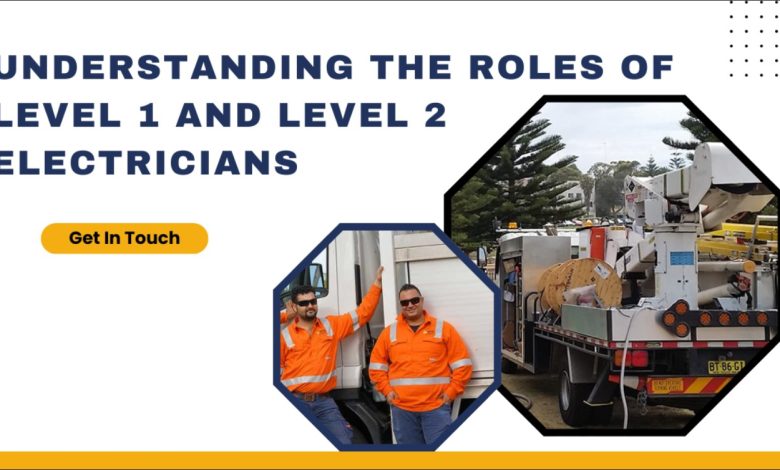Understanding the Roles of Level 1 and Level 2 Electricians

When something goes wrong with your power, most people’s first thought is simply to call “an electrician”. But not all electricians have the same training, skills, or authorisations. In New South Wales and across Australia, electricians are classified into different levels, most commonly Level 1 and Level 2.
Knowing the difference is more than just a technical detail, it helps you call the right professional for the right job. Let’s break down what each level means, what kind of work they handle, and when you should call one over the other.
What Is a Level 1 Electrician?
A Level 1 electrician is your go-to professional for everyday electrical work inside a property. They’re licensed to carry out general installation, maintenance, and repair jobs that keep homes, offices, and commercial spaces powered safely.
Some of the most common tasks for a Level 1 electrician include:
- Installing wiring and switchboards
- Setting up lighting and power points
- Repairing circuits and electrical faults
- Testing and maintaining appliances
- Ensuring the property meets safety standards
However, Level 1 electricians cannot work directly on the electricity network or deal with live service lines. Their work is limited to what happens inside your home or building after the point of supply.
What Is a Level 2 Electrician?
A Level 2 electrician has a much higher level of authorisation. They are accredited under the NSW Government’s Accredited Service Provider (ASP) Scheme, and are licensed to work on both overhead and underground services, including connections directly to the electrical network
Their responsibilities often include:
- Installing, upgrading, or relocating overhead and underground service lines
- Connecting properties to the mains power supply
- Handling metering equipment
- Disconnecting and reconnecting power at the supply point
- Performing upgrades such as single-phase to three-phase power
- Managing emergency electrical repairs when the network supply is involved
Because they deal with high-voltage and live wires, a Level 2 electrician must also be recognised as a level 2 service provider, which means they meet strict industry requirements and are authorised to work directly with the power network.
Key Differences Between Level 1 and Level 2 Electricians
The main difference between these two roles comes down to the scope of work and level of authorisation.
Level 1 electricians focus on internal electrical work, installing and repairing wiring, circuits, lighting, and appliances inside your property. They make sure everything runs smoothly once the power has already been delivered.
Level 2 electricians, on the other hand, work at the supply side. They can connect or disconnect a property from the mains, repair service lines, install meters, and carry out upgrades that involve the electricity network. In short, a level 2 service provider handles the more complex and riskier jobs that go beyond the reach of a standard Level 1 electrician.
Safety and Compliance
The difference in authorisation between Level 1 and Level 2 electricians exists for one main reason is safety.
While Level 1 electricians are trained to keep homes and workplaces safe, Level 2 electricians are authorised to deal with far more dangerous, high-voltage work. They follow strict Australian Standards and compliance rules to ensure not only their own safety but also the safety of the public and property.
Hiring the right electrician for the right job avoids risks, prevents costly mistakes, and ensures your insurance and warranty conditions remain valid.
When Should You Call a Level 1 or Level 2 Electrician?
You would usually call a Level 1 electrician for everyday electrical needs inside your property. This includes things like setting up new lighting or power points, repairing switchboards, testing and tagging appliances, and carrying out fault-finding or general safety checks. Their work keeps the internal systems of your home or business safe and functional.
A Level 2 electrician, on the other hand, is required when the job involves the power supply itself. This could mean connecting or disconnecting your property from the mains, repairing overhead or underground service lines, installing or upgrading a meter, or even switching from single-phase to three-phase power. They are also the professionals to call when urgent emergency repairs are needed after storms or faults that affect the supply line.
Final Thoughts
Electrical work isn’t a generic solution, and knowing the difference between a Level 1 and a Level 2 electrician can save you time, money, and stress. If your job involves the supply line, a power connection, or an upgrade, always talk to an accredited level 2 service provider. They’ll ensure the work is completed safely, legally, and to the highest standards, keeping your home or business powered without a hitch.



